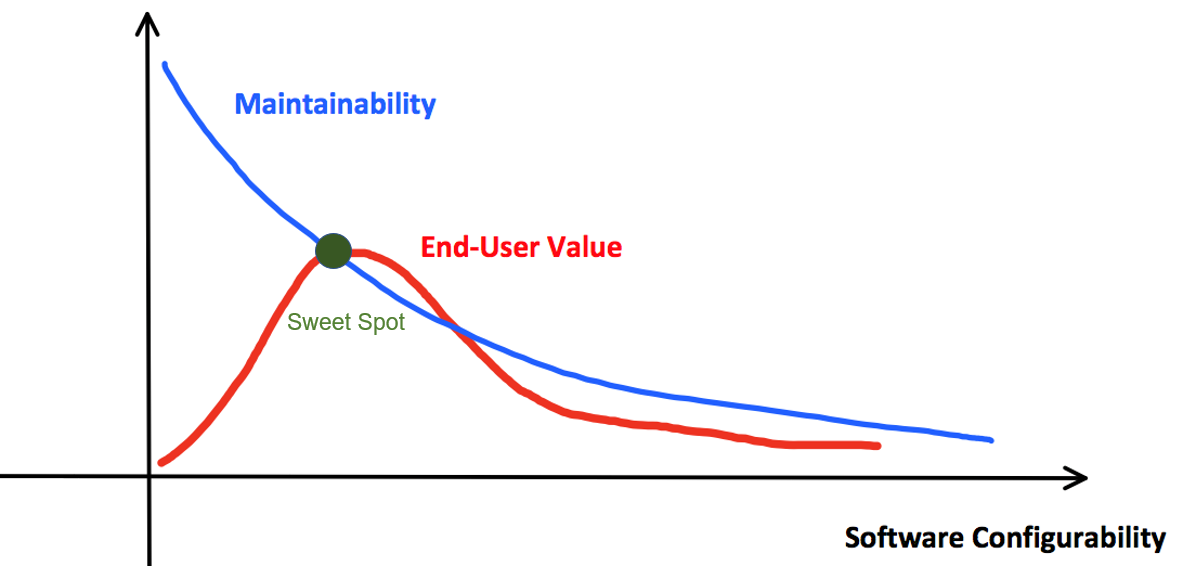Off-The-Shelf VS Custom Software Solutions
Published on
- Use Off-the-Shelf software, OR
- Build a custom solution tailored to their unique business needs.
Examples of Off-the-Shelf software include Content Management Systems (CMS) like SharePoint, Drupal, or WordPress, which can be configured for various business needs. The customizable counterpart would be a static website built with HTML/JavaScript. In the BI/Analytics space, Tableau, PowerBI, and Qlik serve as Off-the-Shelf software, while custom dashboards can be built using JavaScript-based charts. Often, leaders believe Off-the-Shelf solutions are more cost-effective, making them ideal for small businesses or early-stage products. In this post, I aim to bust some myths surrounding Off-the-Shelf solutions to help you make a more informed decision for your organization!

Let’s consider a mid-sized financial consulting company building a website. The only dynamic sections are the News and Careers pages, updated monthly.
Scenario 1: Choosing an Off-the-Shelf Solution The company decides to use a CMS (user-configurable software) so the HR manager can update the Careers page easily, without needing technical skills. They choose an open-source CMS like WordPress for quick development. They hire a freelancer to set it up using a pre-made template and free plugins to speed up the process. Due to unique needs for the News and Careers pages, the developer also creates custom plugins.
After six months, the website is deployed. The HR manager is pleased with the ease of updating job listings. During the development, the freelancer ensured the CMS was patched, vulnerabilities fixed, and backups made regularly. Everything works perfectly—until it doesn't.
A year later, the original developer is no longer available. Patches and plugin updates have been neglected. Now, the custom plugins for the News section no longer function properly after a CMS update. What should the company do? Hire another developer to fix it?
Although the HR manager handled the content updates, the company still needed a WordPress/Drupal developer for maintenance. The belief that this solution would allow them to run the site without a developer and at a lower cost was never accurate.
Scenario 2: Building a Custom Website
Now, consider if the company had built a static HTML website (custom software). They hire a developer and buy a template for a small fee. Without the overhead of a CMS, the site is completed in half the time. The HR manager learns how to update the Careers page by copy-pasting into the HTML template, and soon becomes comfortable with tools like online HTML editors to simplify the process.
Since it's a static site, no patches or major updates are needed. Even if the original developer is no longer around, the company isn't significantly impacted. Any future updates can be handled by someone with basic HTML/JavaScript skills, which is easier and cheaper than finding a CMS expert.
Leaders often underestimate the time and expertise needed to set up and maintain an off-the-shelf solution. Customizing these products is rarely straightforward, and as your business grows, you may need to hire developers to meet your evolving needs.
You might think that this decision depends solely on the specific requirements of your project. However, a more important factor is the nature of your business. Ask yourself: Is the problem you’re solving related to your core business? If the answer is yes, a custom solution is likely better in the long run.
For example, a healthcare company embedding PowerBI dashboards in their core product might assume it's a time-saver. But they may not account for the added complexity, reduced maintainability, and eventual higher costs. As shown in the diagram below, I believe over-configuration eventually degrades end-user value. To deliver high value, you must strike the right balance between maintainability and configurability.
Conclusion
I'm not opposed to configurable software, whether enterprise or open-source. If a SaaS product meets all your needs, give it a try. But if it’s part of your core offering, it's better to build tools with a minimal tech stack to keep maintenance low. I recommend creating an evaluation model to guide your decision between off-the-shelf and custom solutions.
